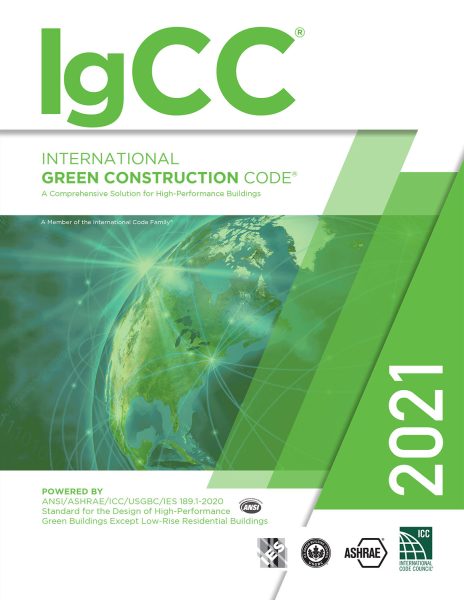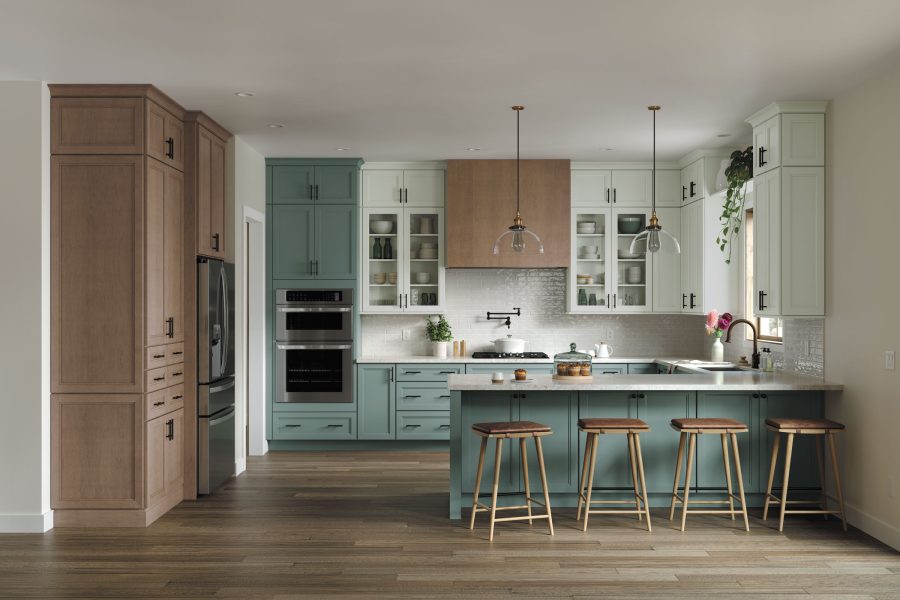Story at a glance:
- ICC-ES provides verified EPDs that help manufacturers meet consumer demands for sustainability and transparency and achieve valuable points for green building certifications like LEED.
- ICC-ES’ VAR program promotes eco-friendly practices and compliance with green codes and standards.
Even in uncertain times, sustainable development has obvious benefits. And those benefits extend to human health and well-being, from reduced pollution and environment-related diseases to improved health outcomes and less stress.
The World Health Organization defines sustainable development as the policies, projects, and investments that provide benefits today without sacrificing environmental, social, and personal health in the future. Protecting future generations includes encouraging and supporting manufacturers to think about the future, according to Anna Mullen, vice president of marketing for the International Code Council Evaluation Service (ICC-ES).
ICC-ES performs technical evaluations of building products, materials, and systems for code compliance and is the go-to evaluation agency in the US and abroad. “We provide manufacturers with independent and comprehensive evaluation to demonstrate how their products are meeting the sustainability targets as referenced in green codes and standards,” says Alex Collins, manager of environmental programs for ICC-ES.
Sustainable development calls for concerted efforts toward building an inclusive, sustainable, and resilient future.
Demonstrating Compliance

ICC-ES provides verified EPDs that help manufacturers meet consumer demands for sustainability and transparency and achieve valuable points for green building certifications like LEED. Image courtesy of ICC-ES
ICC-ES provides rigorous technical evaluation to provide manufacturers proof of code compliance to green codes and standards like the IgCC, CALGreen, LEED, and others. Throughout the life of an evaluation report, surveillance inspections are periodically conducted to ensure no unauthorized changes have occurred in the manufacturing process, and that the product has not varied from what was originally certified.
Technical evaluations and certifications help to drive innovation while putting a bit more responsibility onto the manufacturer, Mullen says. “It’s not just about the design of the product but the material used and the consideration that it does have an expiration date.”
ICC-ES pushes manufacturers to think more about how to create products to be the best they can be and to consider their overall impact on the environment. “We are encouraging and supporting manufacturers by offering certification as a means of communicating their commitment to the consumer. We are trying to help the greater good and the general public. That is why we do what we do,” Mullen says.
ICC-ES certification is highly sought after by those involved in green building. After all, incorporating code compliance into design is the only way to ensure present needs are met without compromising the ability of future generations to meet their own. “Products are being developed to demonstrate compliance to specific sustainability targets,” Collins says. “You have recycled content, formaldehyde, and VOC emissions, and the use of regional or biobased materials, to name some examples.”
Manufacturers are becoming more aware of how they can reduce waste while understanding the environmental impacts and energy consumption of their products, which can lead to cost savings and innovative designs.
We are trying to help the greater good and the general public. That is why we do what we do.
As one of the only accredited program operators in the US, ICC-ES’ Environmental Product Declaration (EPD) is vital. “The EPD is a third-party certified, transparent document that lists the environmental impacts based on a life cycle assessment (LCA),” Collins says.
Based on what standards are used—like ISO 21930, EN15804, and the applicable Product Category Rule used for the EPD—the LCA produced can go in two directions. It can cover the environmental impact of a product from “cradle to gate,” which evaluates a product’s impact from raw material extraction to the production stage in manufacturing the product, emphasizing the production process; or “cradle to grave,” which provides a holistic view, considering the product’s entire life cycle. This includes additional phases like the construction process stage, final disposal, and the recycling potential of the manufactured product. While one focuses on the environmental impacts on the manufacturing product stages, the other encompasses the broader implications for sustainability throughout the product’s life.
The VAR (Verified Attributes Report) program evaluates products to different green codes and standards like ICC 700 and ASHRAE 189.1 to demonstrate product sustainability compliance. ICC-ES compliance documents like its EPD or VAR reports evaluate everything from fasteners to windows to wall coverings to roof material.
“The green codes and standards are written to support sustainability efforts,” Collins says. “If a manufacturer wants to show how their product complies with CALGreen or LEED or any other green code or standard, they may have to consider the recycled content used in their product; they may need to consider where they are sourcing the materials used to produce their product; they may need to consider how much formaldehyde and VOCs are emitted from their insulation, adhesive, or paint products.”
Sustainable Successes

Many prominent kitchen cabinet manufacturers rely on certifications to communicate their environmental commitment to the public and the industry at large. Photo courtesy of Cabinetworks Group
Consumer demand for sustainable products is rising, with many consumers prioritizing environmental considerations when making purchase decisions. The shift toward sustainable materials and manufacturing processes is reflected in everyday home products like kitchen cabinets.
Certification programs that prioritize healthy manufacturing processes and materials can provide consumers with clear and transparent information about the product’s environmental impact. The Safe and Sustainable Cabinetry Program (SASC) utilizes ICC-ES’ proprietary environmental criteria for safe and sustainable cabinetry. “We currently offer certification to cabinet manufacturers who can demonstrate that they meet comprehensive sustainability requirements,” Mullen says. “The program evaluates attributes like biobased content, formaldehyde emission compliance, water reduction, and waste recycling.”
The ICC-ES program is the first in the industry that requires ISO/IEC 17065-accredited third-party evaluation of cabinets to the performance and construction standard ANSI A161.1. It also requires independent verification of compliance with US EPA TSCA Title VI.
Many prominent kitchen cabinet manufacturers rely on certifications like SASC to communicate their environmental commitment to the public and the building industry at large. MasterBrand’s ICC-ES SASC certificate is recognized by the EPA Indoor AirPlus program. Cabinetworks Group, the largest privately held cabinetmaker in the US, was the first to achieve SASC certification.
“We are proud to be the first cabinet manufacturer to be certified to the SASC standard, which raises the bar for sustainability and environmental impact evaluation in our industry,” says John Barkhouse, CEO of Cabinetworks. “Cabinet manufacturers rely heavily on natural resources to build cabinets. Sustainable materials and strong environmental stewardship will play a critical role in securing the future of our industry.”
New State Requirements

Cabinetworks Group, the largest privately held cabinetmaker in the US, was the first to achieve SASC certification. Photo courtesy of Cabinetworks Group
The push for net zero carbon emissions across the construction industry has led to more legislation all over the US.
States like California, Colorado, New York, and Washington have enacted Buy Clean policies to support cutting carbon emissions from building materials like steel, concrete, glass, and insulation. California has even taken the step to place it in their state building codes. The 2022 California Green Building Standards Code set global warming potential (GWP) limits for select projects regarding materials like steel, glass, mineral wool board insulation, and ready-mix concrete, which is to be demonstrated through third-party certified EPDs.
In Colorado, the 2022 Denver Green Codes have also set GWP limits for concrete and steel products in select projects to reduce environmental impact with building construction products. Providing proof of code compliance for concrete and asphalt applications is also now mandated in some jurisdictions, and the requirement is expected to expand to other product categories as well.
In addition to state and local mandates, consumers are largely more interested in working with companies who consider the environment. “Going back to the LCA, that can give the manufacturer the opportunity to improve their sustainability efforts by potentially decreasing the environmental impact of what they are manufacturing and evolving their practices to be more sustainable—like how their energy is used or how and where they are obtaining their resources,” Collins says. “The codes and standards are constantly evolving, and we expect to see more emphasis on this in the future.”
Laura Rote contributed to this reporting.

